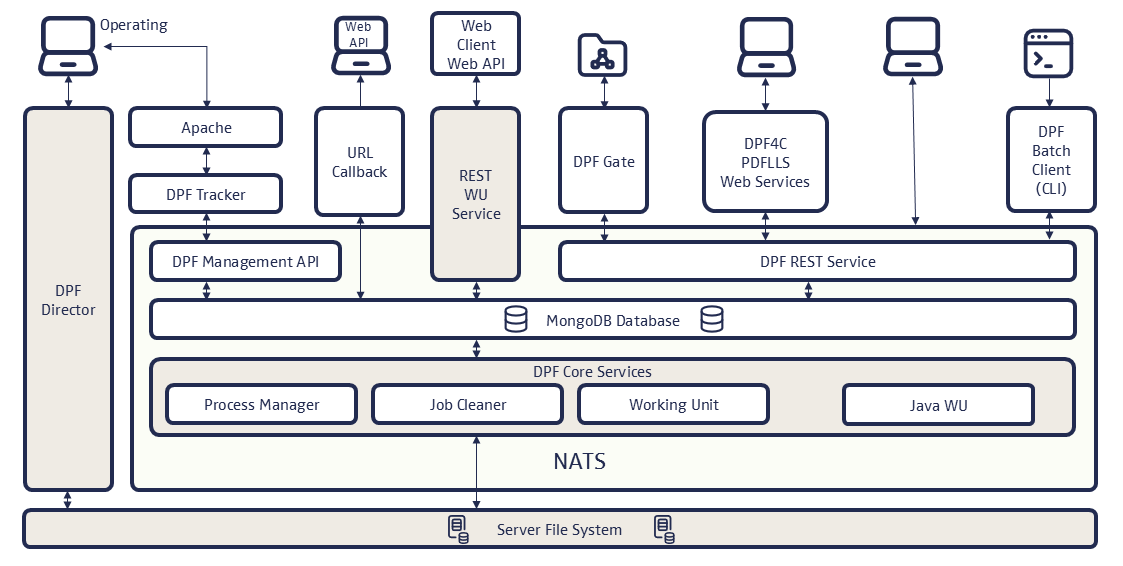Overview¶
DPF Server Components¶
The DPF server includes the following components:
-
DPF Server
The main application of DPF consists of several microservices such as
seal-dpf-jobclient-apiorseal-dpf-process-manager. -
In on-premise installations, the Consul configuration service is used for discovering services via Domain Name System (DNS) and managing the distributed configuration in a cluster. In a cloud environment, the container-orchestration system is used for this.
-
MongoDB
The SEAL-specific MongoDB database contains the data about the processes, working units and jobs. For how to install and configure MongoDB, refer to the SEAL-specific MongoDB documentation.
-
SEAL NATS
For a better message handling, NATS has been introduced as message broker as of DPF 4.0.0. For this, a SEAL Systems-specific SEAL NATS package is available. For more information about SEAL NATS, refer to the SEAL NATS documentation.
-
Elastic Stack (optional)
The DPF log, statistics, audit and accounting data is administrated and visualized by means of Elastic Stack (Elasticsearch and Kibana). The installation is optional. Elasticsearch is the database containing the data. Kibana is the user interface for visualizing the data.
Hint - separate installation
For how to install and configure SEAL Elastic Stack, refer to the SEAL Elastic Stack documentation.
-
SEAL Logrotate (optional)
Logrotate cleans up outdated SEAL Systems-specific log files to free up storage space and prevent performance and memory issues. You can run the Digital Process Factory without Logrotate, but we strongly recommend to install it. When running a cluster, this should be done on each server. For more information, refer to SEAL Logrotate documentation.
DPF Batch Client Components¶
The client components of a DPF system include:
-
DPF Admin Client
As of DPF 4.0.0, DPF Admin Client is being replaced by DPF CLI.
-
Using the command line client, DPF CLI, you administrate the services and configuration of Digital Process Factory or delete jobs from the database. DPF CLI replaces the former DPF Admin Client.
-
Using the command line program, DPF Batch Client, you pass jobs interactively or from another system, for example an SAP system, to the DPF system.
-
Using the graphical user interface, DPF Director, you edit existent working units and processes, and construct new working units and processes. DPF Director is not part of the standard installation and has to be licensed separately.
-
For assigning a job asynchronously, you use DPF Gate. It regularly scans the configured directory for new files and passes them to the DPF system as new jobs. DPF Gate is not available for DPF 4.0.0.
-
DPF Java Batch Client
As of DPF 4.0.0, there is no Java Batch Client anymore.
-
Using the graphical user interface, DPF Tracker, you track, repeat and delete jobs in the DPF system and cancel jobs.
